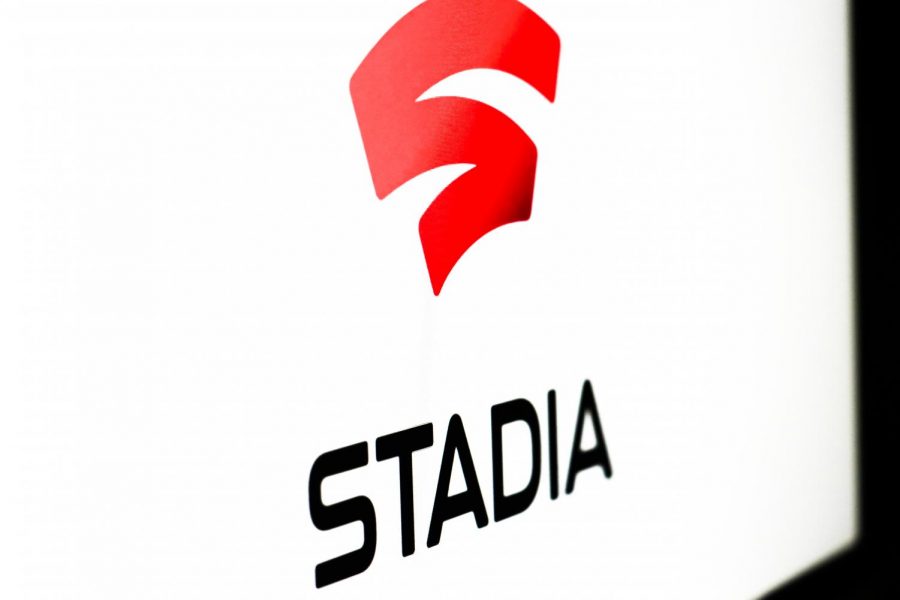Google Stadia: the Future of Gaming
GAMING TREND: Google Stadia is a new frontier of gaming. Although it is too early to tell, the possibilities that Google Stadia present are numerous, and could just about revolutionize the gaming industry as a whole.
December 18, 2019
Video games have become quite a sensation, especially within the last few decades. With its roots reaching all the way back to 1958, video games are an important part of many people’s lives. They have become a hobby, a way to hang out with friends, and for some, even a job. Over time, video games have evolved from inconvenient, clunky arcade machines to consoles that plug directly into TVs and handheld consoles to play on the go. Our world is changing, however. The internet is becoming an increasingly larger and an increasingly important part of our lives, and although there are some fantastic games online, they just simply cannot compare to the increasingly stunning graphics on consoles and computers. Google recently took a dip into a new type of gaming this November, a dip that could just change the entire gaming industry forever. Google released Google Stadia.
Google Stadia offers users unique experiences. Primarily, Google Stadia can be used on any device with internet access. One can play Google Stadia on a phone, a TV (using Chromecast), a laptop, or an iPad. It requires an internet connection. When one is playing a game on, let us say a PlayStation, and they tell their character to turn right, that action is sent to the Playstation system, and is processed, rendered and sent to the screen, allowing the character to turn right. The entire process takes but a fraction of a second. The lag between the controllers sending the action to it being performed is practically unnoticeable. However, on the Google Stadia, the controller sends the action to the device in use, and the device thereon sends the action to an internet router, which relays the message to a Google server where it is processed and sent back. The device then receives the visuals and audio and puts it on the screen. In other words, one must have a very good internet connection in order to play on the Stadia.
Unfortunately, having a good internet connection is actually somewhat of a problem. Even if one has what internet companies advertise as “fast internet,” the connection to Google Stadia may still be poor. This is actually thanks to the past uses for the internet. In general, the internet has been used to stream TV shows, or maybe videos. In these cases, the internet is only really sending the device data from the internet, with the only real thing one sends back being a pause command, or a fast forward. The result of this is most internet companies will cut their costs by only speeding up the part people use (the receiving end), and not the sending one. This is an issue for Google Stadia as it is sending more data than it is receiving. The result is more lag.
Since Google Stadia can be used on any device that can connect to the internet (and can run Chrome), one could potentially play Google Stadia anywhere they can connect to the internet! As one only needs a controller to play, Google Stadia is, as a result, much more portable than a traditional console. In any case, where the user is relatively attached to their current controller, Google Stadia has presented the option to use it in place, as it simply requires a controller to work. In order to bring Stadia abroad, one only needs to bring a controller to connect to whatever device they want to play with. In order to play on a TV, however, the user needs to use the Google Chromecast, which is included in the base package.
Google Stadia is currently quite competitive in the area of console gaming. Primarily due to its unique portability, Google Stadia’s price is a fraction of the cost of a traditional console. The PlayStation 4 is currently selling at about $259 a console, and the Xbox One at $249. The Google Stadia, however, costs $129. The $129 gets the user a Google Stadia controller, a 4K Google Chromecast, as well as three months of Google Stadia Plus. Google Stadia Plus is currently the only way to play Google Stadia, costing $9.99 a month and includes many benefits. Unlike its competitors, however, Google plans to release a base version sometime in 2020, which will still include online play, but the resolution will be up to 1080 pixels and up to 60 frames per second.
All the technical aspects are important, but what really matters is how it is received, and opinions vary on what makes a quality console. Junior Isabel Mullet said the console needs “to have nice portability.” The Google Stadia meets standards with its unique portability. Sophomore Justice Baker adds onto this, thinking that other companies will follow this, saying, “There will be no consoles in the future.” Surely this will be the case if other consoles follow in Stadia’s footsteps. The Google Stadia does not come with its issues, as pointed out by senior Sophia Mularoni, when she said “no lag was important [in a console].”
At this point, Google Stadia is still in its introduction phase, so there is still a lot of speculation on what will happen to it. Although Google Stadia has enormous potential, most people still do not know of it. Google Stadia currently needs some sort of advertisement campaign, and freshman Brett Sanders says that “it could [become a big thing] if streamers play.” It remains to be seen whether or not Google Stadia develops into a first-class console.



